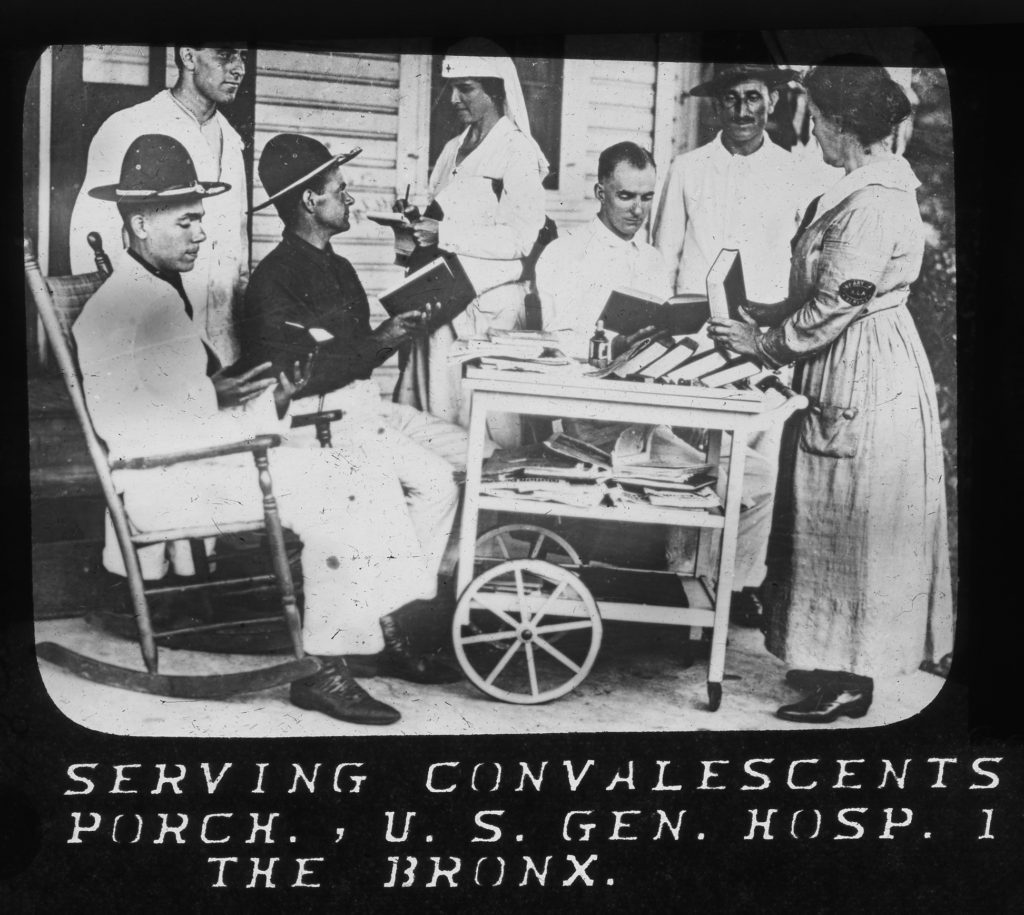
In 1918, the Library War Service stationed librarians in military hospitals to provide dedicated service to the sick and wounded. By 1919, the Service established libraries of approximately 1000 volumes in hospitals without dedicated librarians, and collections of roughly 3,500 in hospitals where a librarian lived and worked on site. There the mostly female librarians wore specially designed uniforms intended to help them fit in among doctors and nurses, and equate their work with the authority of medical professionals. This was important as doctors were often sold on the necessity of books for their patients, but not librarians. “All the army hospitals wanted books,” one librarian noted, “but not all wanted librarians.”
In these hospitals, librarians noted that fiction circulated at an estimated rate of 3 to 1 (to nonfiction). As one hospital librarian noted, “The epidemic of authors is more common than that of disease. Periods of Zane Greyism will be followed by feverish cravings for ‘Tarzanry.” Using the language of disease, this librarian spoke to the desire patients had for books that offered escape, entertainment, and in some cases, consolation. While books in camp libraries primarily offered information about the war or resources to prepare for postwar careers, books in hospital libraries were put to a different use. Yes, books could educate and entertain, but they could also serve as medicine.
“Stories are sometimes better than doctors,” one wartime librarian noted.

Hospital librarians developed this emerging “science” with physicians during the war. “The librarian is often asked by a doctor or nurse to “prescribe” for a patient who is in need of a stimulation which can come from a good book,” one article on the hospital library service explained. But how should librarians prescribe books? What genres made the best medicine?
“Books that take the mind off the war are frequently prescribed by the physicians, and selected reading of a crisp, bright variety proves very helpful,” one librarian observed at the front.